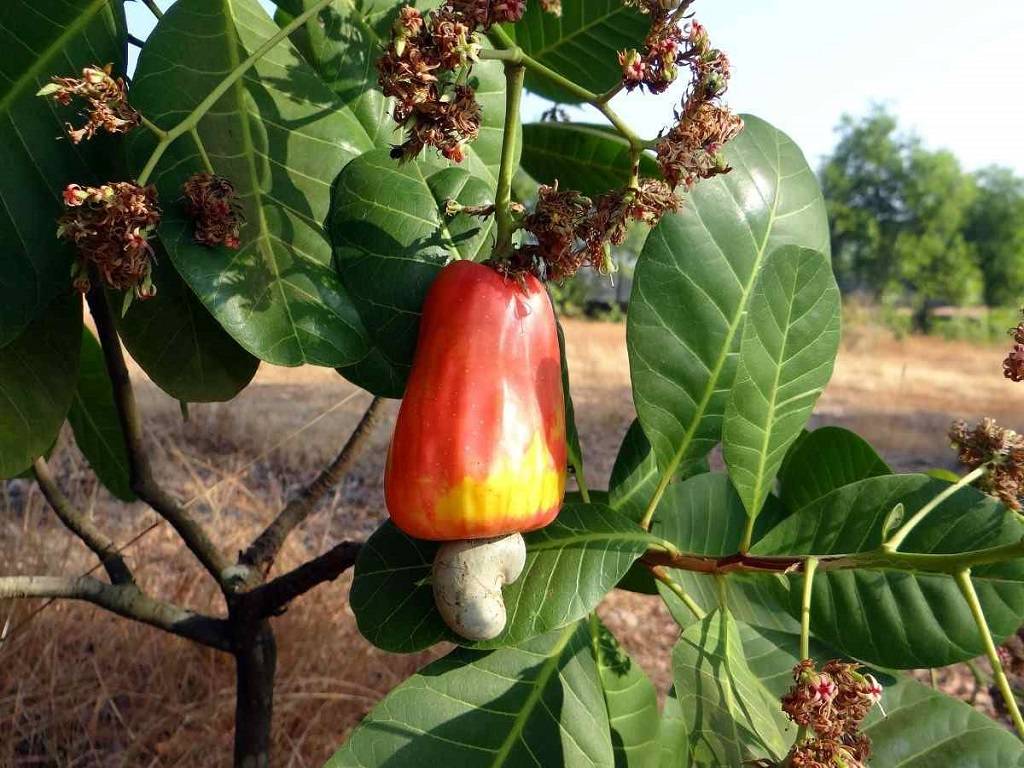
A farmer from Maharashtra's Ratnagiri area named Harishchandra Desai has 1,100 cashew trees. However, only a few have produced fruit this year. The 65-year-old is from the Lanja taluka's Zapade village. He predicts that this year's cashew yield from his trees would decrease by about 70%.
Other farmers in the region are experiencing a similar situation and are facing economic loss. They attribute the low yield to changing weather conditions, crop disease, and pests.
Desai lives in Maharashtra's Konkan area, which is well-known for its cashew farming. Additionally, It is also the main source of livelihood for people residents of the coastal districts of Ratnagiri, Sindhudurg, and Raigad.
However, in the last few years, the production of cashew has been affected owing to multiple reasons. Desai told Mongabay-India that rounds of unseasonal rain during flowering make it impossible for the flowers to bloom.
He continues by saying that many farmers in Lanja are now receiving no yield from any trees as Konkan has seen altering weather patterns over the previous few years.
Over 500,000 (five lakh) farmers in India, who make up a total of 1.5 million people, depend on cashew production for their living. In India, Maharashtra is the state that produces the most cashews.
BN Sawant, Executive Director of the Regional Agricultural Research Station Vengurla, Sindhudurg, attributes the fall in cashew production to unseasonal rain and below-normal temperatures.
"This time, Konkan received rain between October to January. This is a year when cashews flower and produce fruit. Pollination could not take place due to the rain, so fruit-setting did not happen. Additionally, more damage was done between December and January when the temperature went below 17 degrees Celsius.
Director of the Regional Agricultural Research Station at Vengurla, Sindhudurg, B.N. Sawant Another farmer, Prakash Toraskar, who has also experienced losses, like Desai, Like Desai, another farmer, Prakash Toraskar, too has suffered losses and blames it on the changing climate. Toraskar comes from the Konkani area of Maharashtra's coastal Sindhudurg district, which is 100 kilometres from Desai's village.
"Last year, I had eight tonnes of cashew nuts," claims Toraskar, who has 1,000 cashew plants (raw cashew). Only 2.5 tonnes was available this year, which resulted in an income loss of 80%.
Harishchandra Desai, a cashew farmer in Ratnagiri. The Konkan area of Maharashtra, where Ratnagiri is located, is well known for its cashew cultivation.
According to RC Gajbhiye, a scientist at the Regional Agricultural Research Station, temperature shifts have been occurring quickly over the past ten years.
“Cashews require a minimum temperature between 16 and 18 degrees Celsius and a maximum temperature of 26 to 28 degrees Celsius. The temperature in the coastal region does not go below 15 degrees Celsius during the first peak period, but it did this time", according to Gajbhiye. He adds that the large difference between the minimum and maximum temperatures caused the flower to get scorched, and hence, there was less production.
















